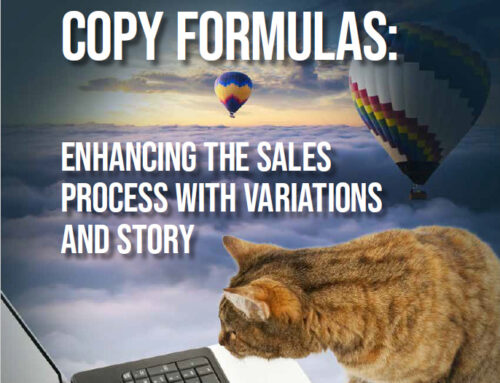You’re launching a new product or service for which you need to generate leads. Or maybe you’re trying to improve existing pages.
You’ve talked about features and benefits with your team.
If you stop there, you’ve only done 10% of your strategic preparation.
Both managers directing the effort and creative resources drafting the content need to be clear about these strategy elements before a word is written:
1. What Buyer Persona(s), avatars, or target audiences will this appeal to?
Every writer should be writing copy with a vision of the target prospect sitting across the desk. Who is the audience, what is their role in the decision and purchase, how often do they make these types of decisions, how familiar are they with your category of solution, who else do they need to convince, and what are their most likely objections that will keep them from taking action.
How are they solving the problem or handling the situation now? What competitive products would they consider?
2. What is each Persona likely to be most interested in about this new product or service?
What is going to get your prospect most excited about this new offering? (Or what is it going to take to GET them excited?)
Does it solve a particular problem? Will they need a 360-degree view, or a step-by-step implementation plan so they can see how easily it will integrate with their existing systems?
How can they use the product or service? How will it improve their daily life? How long will it take to see the benefits? Are there bottom-line benefits that can be proven?
3. What Buying Stage should each page be written for?
At what stage in each Persona’s journey will this typically be searched for – or when would this content be most helpful? For example . . .
Are you introducing a new CATEGORY of solution?
If the potential buyer doesn’t know your category even exists or what it’s called, he or she can’t search for it. Content may need to educate on the CATEGORY first.
If you’re introducing a solution in an established category, what is going to make your audience notice your solution? How does it compare to the competition? Why should they buy your version?
4. What Emotional Driver is motivating this particular Buyer Persona?
What emotion could you weave into your headline and lead paragraph to make your copy stronger?
Every prospect is driven by an emotion, no matter whether you’re selling to consumers or businesses. If you can address that emotion head-on, encourage it, stoke it, build upon it, you’re more likely to get your prospect to take some action.
5. What is the role of each page in your Conversion funnel?
What is the next step after each page?
Does the page need a Lead Generation Offer? Do you have an Offer that is appropriate for the Buying Stage of that particular Persona?
On a Lead Generation website, the best place for a Lead Offer is: EVERYWHERE.
- On your Home page
- On every product and service page
- On every blog post
Your visitors don’t usually come to your website looking for an Offer. They’re not typically going to seek out your white paper or special report or ebook or Buyer’s Guide (unless you’ve specifically promoted those elements or made them visible).
If the purpose of your website is Lead Generation, your Lead Generation Offer(s) should be on the most visited pages, your key pages, the pages that most often show up in searches on search engines.
It’s Time to Improve the Way We Develop Content – and That Starts with Marketers
If you think your content is weak, have you gone through these strategic decisions before asking your creative resources to get to work?
The most effective content is usually driven by an effective strategy. Try to avoid just “jumping in” or “just getting the copywriter or agency started.” You’ll end up with much more focused content — when your creative resources have a better plan to begin with.
Need more help with your website content? Our new BEST-SELLING book, “The Results Obsession: ROI-Focused Digital Strategies to Transform Your Marketing” is now available on Amazon!

Learn more about The Results Obsession and see the Table of Contents
The book includes 3 chapters on copy strategy, writing specific elements like headlines, and making every word as strong as it can be. There’s also a chapter on website analysis and navigation, as well as writing website copy.
It will help you analyze your website step by step, so you can target the areas that need improvement.






Leave A Comment